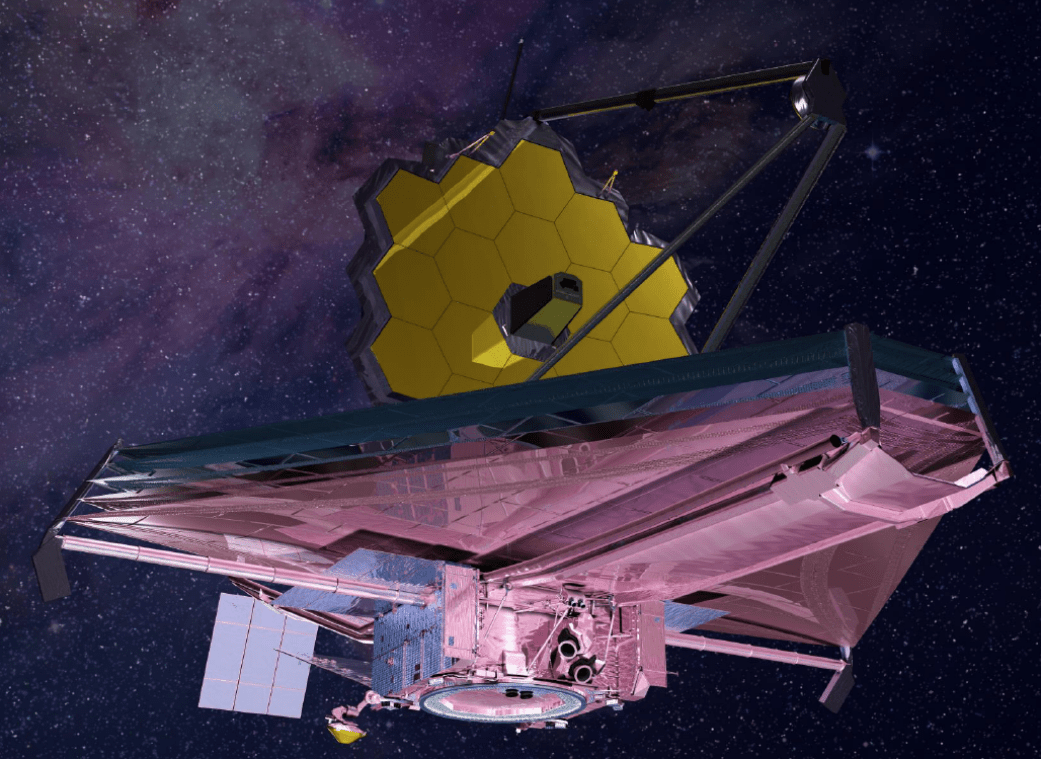When it is deployed to space, the
(JWST) will be the most powerful and advanced telescope ever deployed. As the spiritual and scientific successor to the
Hubble
, Spitzer
, and
, this space observatory will use its advanced suite of infrared instruments to look back at the early Universe, study the Solar System, and help characterize extra-solar planets.
Unfortunately, after many delays, there's some good news and bad news about this mission. The good news is that recently, the Independent Review Board (IRB) established by NASA to assess the progress on the JWST unanimously decided that work on the space telescope should continue. The bad news is that NASA has decided to
push the launch date back again
- this time to March 30th, 2021.
As part of their assessment, the IRB was established in April of 2018 to address a range of factors influencing Webb's schedule and performance. These included the technical challenges and tasks that need to be tackled by its primary contractor (Northrop Grumman) before the mission can launch. A summary of the report's recommendations, and NASA's response, can be
read here
.
[caption id="attachment_135497" align="aligncenter" width="580"]
The Hubble Space Telescope on the left has a 2.4 meter mirror and the James Webb Space Telescope has a 6.5 meter mirror. LUVOIR, not shown, will dwarf them both with a massive 15 meter mirror. Credit: NASA
[/caption]
In the report, the IRB identified technical issues, which including human errors, that they claim have greatly impacted the development schedule. As they stated in their Overview:
The anomaly mentioned in the report refers to the "anomalous readings" that were detected from the telescope during vibration testing back in
December 2016
. NASA responded to this by giving the project up to 4 months of schedule reserve by e
xtending the launch window. However, in 2017, NASA delayed the launch window again by 5 months, from October 2018 to a between March and June 2019.
This delay was requested by the project team, who indicated that they needed to address lessons learned from the initial folding and deployment of the observatory's sun shield. In February of 2018, the
Government Accountability Office
(GAO) issued a report that expressed concerns over further delays and cost overruns. Shortly thereafter, the JWST's Standing Review Board (SRB) made an independent assessment of the remaining tasks.
[caption id="attachment_138275" align="aligncenter" width="480"]
The James Webb Space Telescope being placed in the Johnson Space Center's historic Chamber A on June 20th, 2017. Credit: NASA/JSC
[/caption]
In May of 2018, NASA issued a
statement
indicating that they now estimated that the launch window would be some time in May 2020. However, they chose to await the findings of the IRB and consider the data from the JWST's Standing Review Board before making the final determination. The new launch date was set to accommodate environmental testing and work performances challenges on the sunshield and propulsion system.
According to the IRB report, this latest delay will also result in a budget overrun. "As a result of the delay, Webb's total lifecycle cost to support the March 2021 launch date is estimated at $9.66 billion," they concluded. "The development cost estimate to support the new launch date is $8.8B (up from the $8B development cost estimate established in 2011)."
As Jim Bridenstine, the NASA Administrator, indicated in
a message
to the NASA workforce on Wednesday about the report:
In the end, the IRB, SRB and NASA are all in total agreement that the
James Webb Space Telescope
is a crucial mission that must be seen through. In addition to shedding light on a number of mysteries of the Universe - ranging from the earliest stars and galaxies in the Universe to exoplanet habitability - the JWST will also complement and enhance the discoveries made by other missions.
[caption id="attachment_138788" align="aligncenter" width="580"]
The combined optics and science instruments of NASA's James Webb Space Telescope being removed from the Space Telescope Transporter for Air, Road and Sea (STTARS) at the Northrop Grumman company headquarters on March 8th, 2018. Credits: NASA/Chris Gunn
[/caption]
These include not only
Hubble
and
Spitzer,
but also missions like the
Transiting Exoplanet Survey Satellite
(TESS), which launched
this past April
. Thomas Zurbuchen, associate administrator for NASA's Science Mission Directorate, also issued
a statement
on the recent report:
The JWST will also be the first telescope of its kind, being larger and more complex than any previous space telescope - so challenges were anticipated from its very inception. In addition, the final phase consists of some of the
most challenging work
, where the 6.5-meter telescope and science payload element are being joined with the spacecraft element to complete the observatory.
The science team also needs to ensure that the observatory can be folded up to fit inside the Ariane 5 rocket that will launch it into space. They also need to ensure that it will unfold again once it reaches space, deploy its sunshield, mirrors and primary mirror. Beyond that, there are also the technical challenges of building a complex observatory that was created here on Earth, but designed to operate in space.
As a collaborative project between NASA, the European Space Agency (ESA), and the Canadian Space Agency (CSA), the JWST is also representative of the new era of international cooperation. As such, no one wishes to see the mission abandoned so close to completion. In the meantime, any delays that allow for extra testing will only ensure success in the long run.
Good luck JWST, we look forward to hearing about your first discoveries!
Further Reading: NASA
 Universe Today
Universe Today
